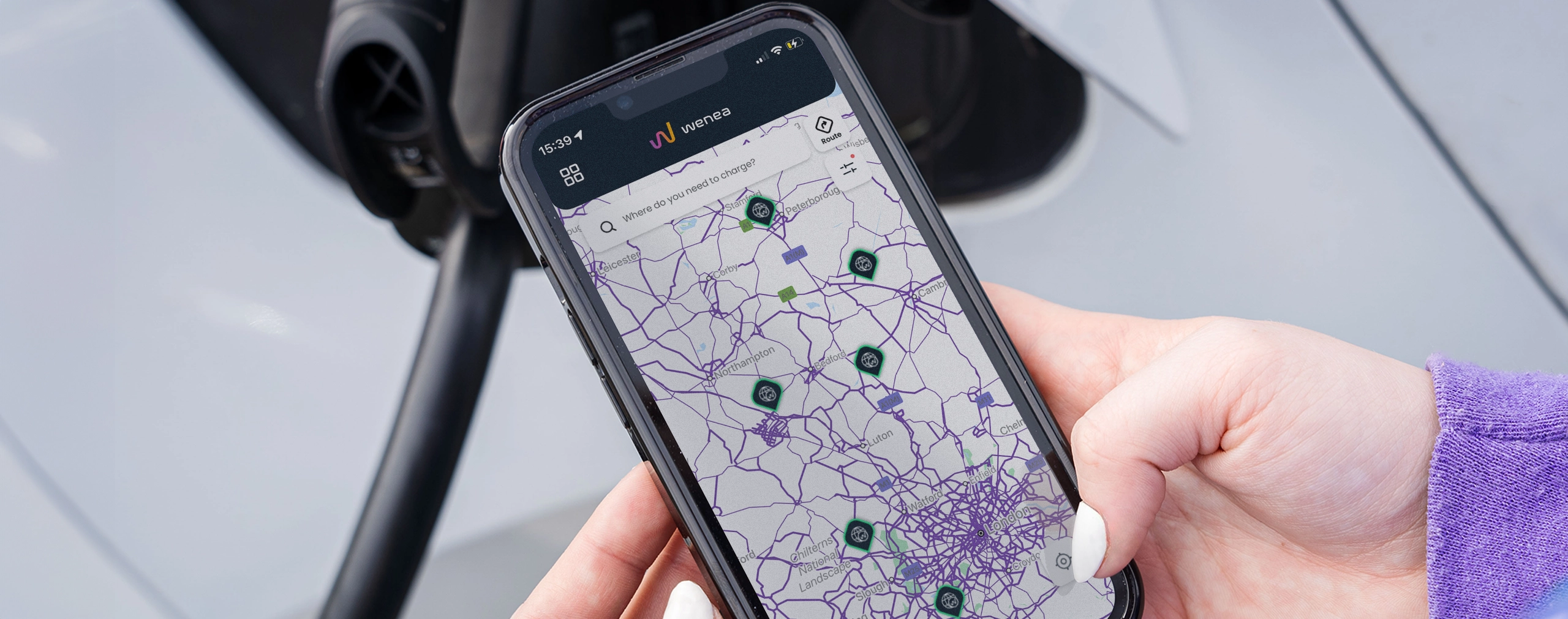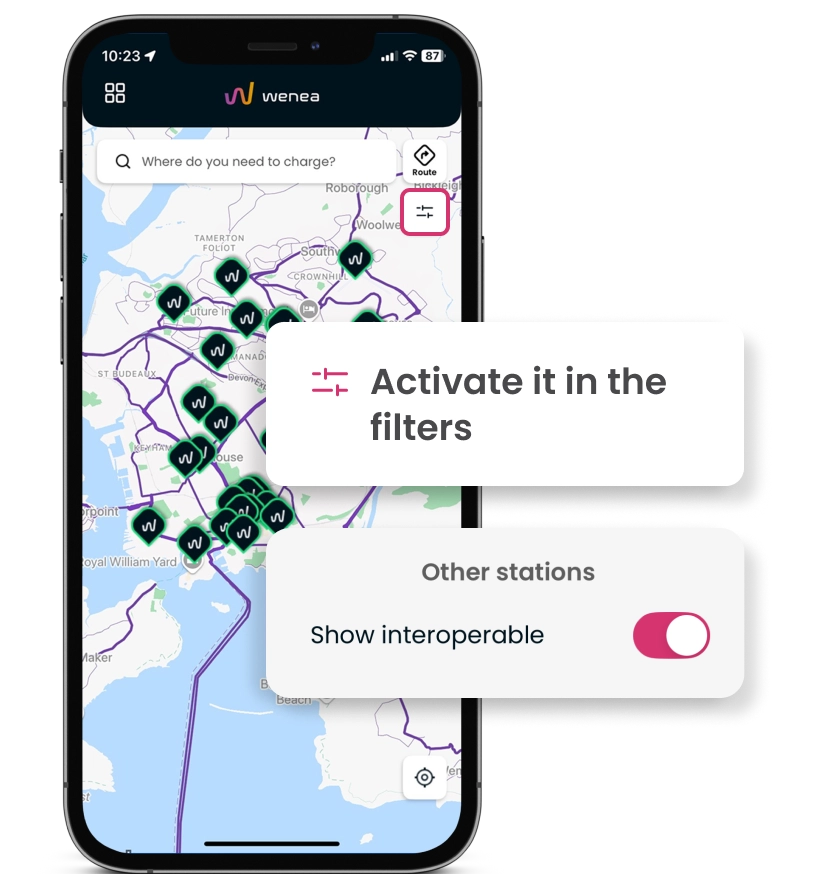
Travelling across Europe in an electric vehicle is now easier than ever.
Charging networks are growing, countries are accelerating their energy transitions, and EV drivers are enjoying a more seamless and connected experience.
At the heart of this evolution lies interoperability — the technology that makes charging without borders possible.
In this article, we explain what interoperability is, how it works, and how Wenea connects you to more than 400,000 charging points across Europe through a single app.
Here we tell you what a good charging app should have and why at Wenea we integrate everything into a single solution.
What is interoperability in EV charging?
Interoperability allows different charging networks to communicate with each other, so drivers can start, manage and pay for a charge using a single account or app, regardless of the network operator.
In practice, this means that with the Wenea app, you can:
Locate charging stations from multiple operators.
Start and stop a session remotely.
Pay using your existing Wenea account.
👉 In short: one app, one account, and hundreds of thousands of charging points across Europe.
How interoperability works
Behind the scenes, interoperability relies on roaming platforms and commercial agreements that allow different networks to “speak the same language”.
When a user starts a session at an interoperable station through Wenea:
The app connects with the partner network’s system.
The charging session is authenticated.
Payment and data flow seamlessly between both systems.
The result: an identical experience to charging at a Wenea station, even if you’re abroad or using a partner’s network.
The role of CPOs and eMSPs
To make interoperability possible, several players in the EV ecosystem must work together — mainly CPOs (Charge Point Operators) and eMSPs (eMobility Service Providers).
CPOs manage and operate the physical charging infrastructure — the hardware, uptime and maintenance of the stations.
eMSPs, like Wenea, provide the digital service to end users — through apps, subscriptions or integrated charging platforms.
Interoperability connects both:
CPOs open access to their networks, while eMSPs enable drivers to charge across multiple CPOs using one unified experience.
Learn more about how these two models work together in our upcoming article:
CPO vs eMSP: What’s the difference?
Wenea’s interoperable network across Europe
Thanks to interoperability, Wenea users can access over 400,000 charging points in Europe, in addition to Wenea’s own growing network in Spain and the UK.
Wenea users can charge in: France, Denmark, Spain, Italy, Netherlands, Belgium…
To see these interoperable stations in the app, simply open the Filters menu and select “Show interoperable”. You’ll instantly view all partner networks available within your Wenea account.

Why interoperability matters for sustainability
Interoperability doesn’t just simplify charging — it also accelerates the shift towards a cleaner transport model.
By connecting multiple networks under a single system, infrastructure is used more efficiently, reducing duplication and supporting Europe’s decarbonisation goals.
At Wenea, we believe in an open, connected and sustainable approach to mobility.
Every new partnership brings us closer to a future where charging anywhere in Europe feels as easy as charging at home.

